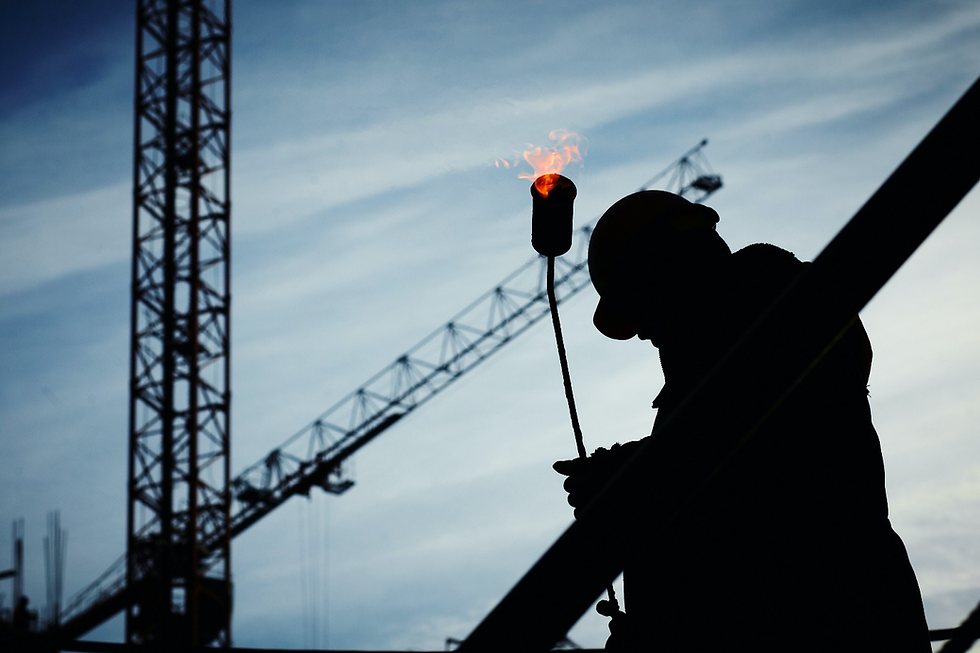Precautions to Consider before Hoisting Personnel
- Carmen Zajicek

- Sep 8, 2022
- 4 min read
Since construction sites are unsafe environments, everyone is required to be trained on safety protocols. This can prevent dangerous accidents. From proper scaffold erection to fall protection safety, every aspect of a job site entails clearly established standards to ensure the lives of workers aren’t at risk. To ensure the safety of everyone and everything on your job site, go through the precautions, and limitations hoisting personnel must consider:
Pre-lift meeting
All applicable requirements and procedures must be reviewed in a pre-lift meeting, which must be conducted before the trial lift. The meeting must be attended by the person responsible for the task to be performed, employees to be hoisted, the signal person (if used for the lift), and the equipment operator.
Use of personnel platform
A personnel platform isn’t required for hoisting personnel:
In the chimney, shaft, and tank (concrete or steel) operations,
Only for transfer to or from a marine site,
In pile driving operations, or
Into and out of drill shafts that are approximately 8 feet in diameter.
Hoisting personnel
Employers aren’t permitted to use derricks and cranes to hoist employees unless:
The dismantling, use, and erection of traditional means of reaching the work area aren’t possible because of the project’s worksite conditions or structural design.
The dismantling, use, and erection of traditional means of reaching the work area, like a scaffold, elevating work platform, aerial lift, stairway, ladder, or personnel hoist, would be more hazardous.

Trial lift and inspection
A trial lift loaded with uncopied personnel platform at least to the anticipated lift weight should be made from ground level or any other location where workers will make their way into the platform, to every location at which the platform is to be positioned and hoisted.
Although there are multiple locations to be reached from just one set-up position, either a single trial lift or individual trial lifts for every location must be performed. The chosen method must be the same as the method that will be used to hoist the personnel.
After a trial lift, an experienced professional should visually inspect the personnel platform, ground/base support, and equipment to determine whether the trial lift has led to any adverse effect or has exposed any problem/defect. All conditions found during the trial lift and following inspections that aren’t able to meet any requirement produce a safety hazard, which must be rectified before hoisting personnel.
Hoisting personnel in close proximity to power lines
Hoisting workers within 50 feet of a power line that is over 350 kV, and hoisting workers within 20 feet of a power line that is up to 350 kV aren’t permitted (power transmission and distribution work is an exception).
Proof testing
After any modification or repair, and before hoisting employees on the personnel platform, the rigging and platform must be proof tested. The proof test and the trial lift must be done at the same time. Personnel hoisting shouldn’t be done until a qualified professional determines that the rigging and platform have passed the proof test successfully.
What should be avoided when using material hoists?
Don’t leave suspended loads unattended.
Don’t exceed the hoist load limit.
Don’t raise loads greater than required to clear objects.
Don’t leave slings dangling from the load hook. When carrying slings to the load, place sling hooks on the sling ring.
Don’t hammer a sling into place.
Don’t insert the hook’s point in the link of the chain.
Don’t tip a load — it isn’t stable and harms the hoist and hook.
Don’t pass a load over workers.
Don’t use hoisting equipment for lifting personnel.

How to use materials hoist safely?
Ensure everyone is away from the load before starting to hoist.
Remove every packing, blocking, part, and material from the load before starting to lift.
Move hoist controls smoothly. Avoid jerky, abrupt movements of the load. Before lifting the load, remove slack from the hoisting ropes and sling.
Seat the load appropriately in the hook.
Stand completely clear of the load.
Place the load directly in line with the hook shank when loading the lower hook.
While a straight line pull must be maintained, lever-operated hoists may be used to pull in all directions. Side lifting or pulling increases wear and tear, setting up dangerous stress levels on hoist parts. Only a single person should pull on the chain, hand, and lever hoists.
Hang hoists firmly in the greatest part of the hook area. This will make the hook support directly in line with the hook skank.
Hoist from directly over the load. If the load isn’t centered, it may swing when lifted.
Keep chains and wire ropes lubricated.
Familiarize yourself with the safe load limit of the hoist, and don’t exceed it.
When should the materials hoists be inspected?
See if the safe load limit is posted on the hoist.
If certain items aren’t operating properly, replace them. Let a qualified professional tag and remove defective items.
Follow the recommended maintenance schedules.
Schedule an in-depth inspection of every hoist.
Periodically inspect the hoist, or as recommended by applicable legislation or the manufacturer.
Don’t lift a load before checking the lower and upper hooks to see that they swivel. Instantly replace any corroded, damaged, or worn wire rope or chain. Tag and remove any defective rope or chain.
Inspect limit switches, brakes, ropes, and hooks every day for wear and tear.

Crane Warning Systems Atlanta offers a crane indicator system for every crane
At Crane Warning Systems Atlanta, we aim to offer exceptional support for the Rayco Wylie crane indicators we sell.
We have product specifications, pictures, wiring diagrams, manuals, and technical support videos, all free here on our site support page.
Reach out to us by phone, email, or instant message chat for more information on our Rayco Wylie crane indicator systems!



